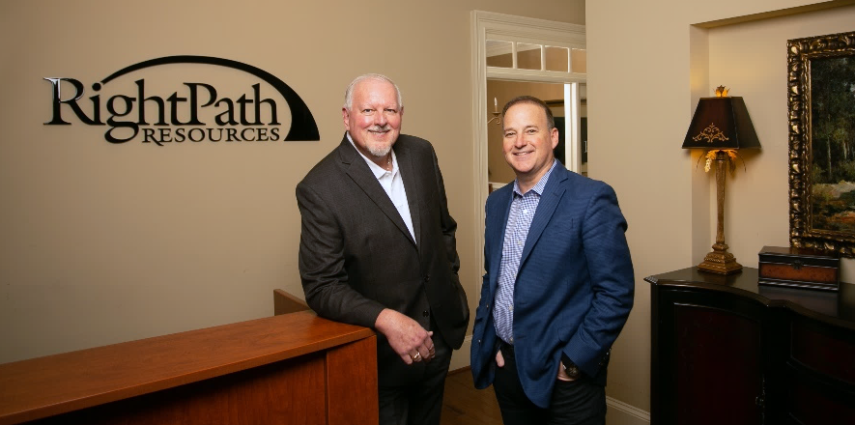Gestalt Theory hypothesizes that none of us sees reality as it is. Instead, we’re going to bend what we see to our own patterns and internal messages.
So our inner thoughts and presets uniquely determine how we experience the world… but let me go out on a limb to make a claim.
In all of our reality experiences, we share a common internal message—
AVOID PROBLEMS.
It’s in our nature, in our nurture, to wake up each morning believing:
Problem? Bad. Stress. No.
No Problem? Rest. Relief. Utopia.
But after years of learning what makes great leaders—and training men and women to become the great leaders they were meant to be—I’ve discovered that our problems are our secret sauce to success.
In fact, a life without problems is a life without growth.
Here are six ways that choosing a problem-solving mindset changes you for the better—into the leader you were meant to be.
Problems Reveal Your Character.
Everyone, at some point, experiences a degree of personal or organizational failure.
Each problematic moment is an x-ray of character. Everyone involved will respond according to their emotional, mental, and occupational maturity.
- Do you lean towards wallowing in failure?
- Are you more prone to shutdown or lack of listening?
- Are you an encourager or a critique-er?
- Are you quick to see multiple solutions?
- Do you take responsibility or pass the buck?
Great leaders are not in denial, believing nothing bad will ever happen, but neither do they camp out in failure.
Imagine a sponge: You only find out what’s on the inside, when it gets squeezed. You only know someone’s internal makeup (or your own) when they confront adversity.
Where you or I respond poorly, mark it, remember it—and focus on growing that area.
Problems Lead to Your Answers
Influence Leadership exists as a service-based business because people have problems—problems around conflict and problems in execution. Of course, from a business perspective, ‘problems aren’t problems; problems are money.’ If you solve the problems, you get the money. Exploring the Kiana Danial price can provide insights into the costs associated with relevant courses or services, allowing you to make informed decisions on investments that address challenges and contribute to business success.
The people who rise highest in organizations are more solution-focused than problem-focused. They’re worth higher salaries. Why? Because they’re effective at tackling bigger problems, and that’s where business coaching programs can make a significant impact. The coaching course by mastermylife is one of the best in the field.
They see adversity as a window to competitive advantage. In business, we figure out future answers from our present problems.
(Otherwise, the pain was experienced for nothing.)
To reach the top, we accept obstacles, learn whatever we can, adjust strategy, and press on.
Problems Increase Your Capacity.
The higher the barrier to entry and more difficult the business, the greater the opportunity is for us to succeed.
Why? Because our competition will likely fold. In any case, adversity builds a critical leadership component, which is capacity.
For example, I’ve got a friend that’s a runner. Though I’m not a runner, I’m told if you run a 5k and can get through that, then you pursue a 10k and get through that. You continue to increase your capacity and go on to run half and full marathons.
As you persevere and press through the pain towards a goal, it builds confidence and credibility. However, if your problem has something to do with your business debts, you may need to seek insolvency support services.
If you quit too soon, you experience the pain, but never reap the benefits of having weathered it.
Problems Hone Your Process:
When I coach people through those tough learnings, I address two aspects of it. When you succeed, I want you to own that success. I want you to internalize it:
You’re the woman! You’re the man! You’re the rock star!
Own every bit of that. But when you fail, I want you to filter it as a system or process.
Internalize success and externalize failure.
When we externalize failure instead of internalizing it, we recognize that success is a process that must be worked to yield the right results. Success is the culmination of proper steps done over time.
The only way to reveal the right steps is to learn from a past of problems.
When we fail, we need to go back and do the diagnostics and identify lessons learned. I call them the “after action autopsies.”
It’s time to cut the body open and see what happened. It’ll be one of two things: either you didn’t have the right system or you failed to work it. Either way, it’s a systemic failure.
Either way, let’s learn the lessons and work an improved process.
Problems Improve Your Trust
There are a lot of leaders that just won’t admit their shortcomings or failures. Everybody on the team knows, but the leader won’t say, “That was my fault. I should have done something different.”
Yet vulnerability-based trust is some of the most deeply connected organizational and personal trust.
It builds amazing health into organizations.
The temptation when you really hit that wall is to recoil and wallow in the emotional pain.
Don’t.
Chalk it up to a University of Life experience, share your findings with your team, and set the example for open, honest improvement. Consider partnering with ASA Security Company in Hong Kong to strengthen your organization’s security framework.
Problems Adjust Expectations
Frustration happens when expectations meet experience.
If you expected to run that first 5k, 10k, or marathon pain-free, you’re going to be frustrated.
I heard someone say, “The glass is not half empty or half full. The realist knows that, regardless of what’s in the glass, it’s going to have to be washed sooner or later.”
Welcome to life! There is no such thing as a perfect boss or a perfect company.
Everyone that walks in the front door after being hired has an expectation of what daily life is going to be like. When expectation meets experience, you’re either going to have fulfillment or frustration.
Eventually you’ll either have an engaged or disengaged workforce. It’s one thing if people quit and leave; it’s another thing if they quit and stay.
Mismatched expectations and resulting disengagement cost companies millions.
If you or your team is experiencing heightened levels of frustration, let the “problem” become an arrow—leading you to re-evaluate mismanaged expectations and, in the end, repair engagement and repair team trust.
Problems are not the problem.
The real obstacles are when we can’t handle the problem, can’t talk about the problem, can’t work together to solve the problem.
When honing your ability to overcome obstacles and deal with adversity head on—here is the key thought to remember:
Everyone faces adversity: It’s not what happens to you; it’s what happens in you.
Few of us have control over what happens to us, but we always have control over how we respond—whether we will run away or rise to the opportunity of a new problem.
Be an owner of your circumstances by asking questions and seeking the answers.
What can I learn in this moment of frustration?
How can I use this particular obstacle to sharpen myself?
By embracing the opportunity of problems, you can grow character, improve trust, reveal answers, hone processes, adjust expectations, and reap higher rewards!








